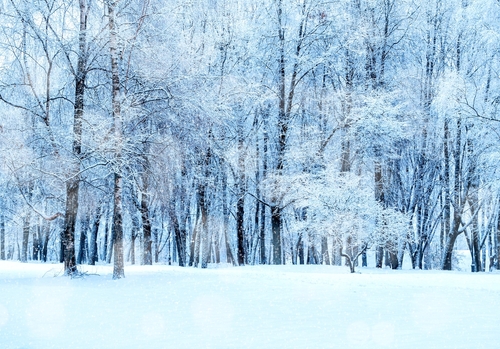Winter planning starts with understanding what weather patterns lie ahead. The Farmer’s Almanac has released its winter forecast for 2025, providing insights that help families, farmers, and communities prepare for the colder months.
For over 200 years, the Farmer’s Almanac has offered seasonal predictions using a time-tested formula that combines solar science, climatology, and meteorology. While no forecast guarantees perfect accuracy, these predictions serve as a valuable planning tool for millions of Americans.
This year’s winter forecast brings both expected seasonal patterns and some surprising regional variations. Understanding these predictions helps you make informed decisions about everything from heating costs to travel plans.
How the Farmer’s Almanac Makes Winter Predictions
The Farmer’s Almanac uses a proprietary forecasting method developed in 1818. This system analyzes sunspot activity, planetary positions, and lunar cycles alongside traditional meteorological data.
The publication claims an 80-85% accuracy rate for their seasonal forecasts. While meteorologists often debate these methods, many people find value in the long-range perspective the almanac provides.
Their predictions focus on temperature and precipitation patterns rather than specific daily weather events. This approach offers a general framework for seasonal planning without attempting to predict individual storms or temperature swings.
Regional Winter Outlook for 2025
Northeast and New England
The forecast predicts a colder-than-normal winter for the Northeast. Snow lovers should prepare for above-average snowfall, particularly in January and February.
Key predictions include:
- Temperatures running 2-4 degrees below normal
- Heavy snow events likely in late January
- Extended cold periods through March
Midwest and Great Lakes
The Midwest faces a winter of contrasts. Early winter may feel milder, but harsh conditions are expected to arrive by mid-January.
Expected patterns:
- Variable temperatures with sudden drops
- Ice storms possible in February
- Snow accumulation near seasonal averages
Southeast and Gulf Coast
Southern regions should experience typical winter conditions with occasional cold snaps. The forecast suggests brief but intense cold periods rather than sustained freezing weather.
Notable predictions:
- Frost arriving later than usual
- Short-lived arctic blasts in February
- Mild conditions dominating most of the season
Western States
The West shows the most complex forecast pattern. Mountain regions face heavy snow, while coastal areas remain relatively mild.
Regional specifics:
- Sierra Nevada mountains receiving above-normal snowpack
- Pacific Northwest staying wetter and cooler
- Southwest desert regions experiencing typical winter patterns
Temperature Trends Across the Country
National temperature patterns reveal interesting regional differences. The eastern half of the country faces below-normal temperatures, while western regions see more typical conditions.
Cold air masses are expected to penetrate deeper into southern states than recent years. This pattern could bring unusual freezing conditions to areas that rarely experience hard frost.
The forecast indicates temperature volatility will characterize much of the winter. Rapid swings between cold and mild periods may occur more frequently than usual.
Precipitation and Storm Patterns
Snow accumulation predictions vary significantly by region. Northern states should prepare for above-average snowfall, while southern areas face typical winter precipitation.
Storm tracking suggests several major weather systems will impact the eastern seaboard. These events could bring significant snow to major metropolitan areas.
Ice storms present concerns for the central plains and Ohio Valley. The forecast warns of conditions favoring freezing rain events during late winter.
Energy and Heating Considerations
Colder temperatures in key regions mean higher heating costs for many households. The forecast suggests planning for increased energy usage during peak winter months.
Natural gas and heating oil demand may exceed recent seasonal averages. Early preparation helps avoid supply shortages and price spikes.
Energy-efficient home improvements become more valuable during harsh winters. Simple weatherization steps provide immediate benefits when temperatures drop.
Agricultural and Farming Implications
Farmers use winter forecasts to plan crop storage, livestock shelter, and spring planting schedules. This year’s predictions suggest protecting sensitive plants and ensuring adequate animal housing.
Soil preparation benefits from understanding freeze-thaw cycles. The forecast indicates ground frost may penetrate deeper than recent years in northern agricultural zones.
Water management becomes crucial when snow accumulation exceeds normal levels. Farmers should prepare for potential flooding during spring snowmelt.
Transportation and Travel Planning
Winter travel conditions vary dramatically across different regions. The forecast helps travelers understand which areas may experience the most challenging driving conditions.
Airport operations often face disruptions during heavy snow events. The prediction of above-normal snowfall in the Northeast suggests potential flight delays and cancellations.
Road maintenance departments use seasonal forecasts to plan salt and sand purchases. This year’s predictions indicate higher-than-usual demand for winter road treatment materials.
What Insights from the Fall Forecast Can Help Us Understand the Winter Forecast for 2025?
The fall forecast 2025 provides crucial data on temperature trends and precipitation patterns. By analyzing this information, meteorologists can better predict potential winter conditions, helping communities prepare for extreme weather and making informed decisions regarding energy consumption and safety protocols as winter approaches.
Frequently Asked Questions
How accurate are Farmer’s Almanac winter predictions?
The Farmer’s Almanac claims 80-85% accuracy for their seasonal forecasts. While this rate generates debate among meteorologists, many people find their long-range predictions helpful for general planning purposes.
When should I start preparing for winter weather?
Preparation should begin in early fall, regardless of specific forecasts. Stock up on heating fuel, winterize your home, and service heating equipment before the first cold snap arrives.
Do these predictions affect energy prices?
Winter weather forecasts can influence energy market prices. Colder predictions may lead to higher demand expectations, potentially affecting natural gas and heating oil costs.
How do winter forecasts help with agricultural planning?
Farmers use seasonal forecasts to make decisions about crop storage, livestock shelter, and spring planting preparations. Understanding potential weather patterns helps optimize agricultural operations.
Should I change my travel plans based on winter forecasts?
Long-range forecasts help with general travel planning but shouldn’t replace checking current weather conditions before specific trips. Use seasonal predictions for broader planning decisions.
